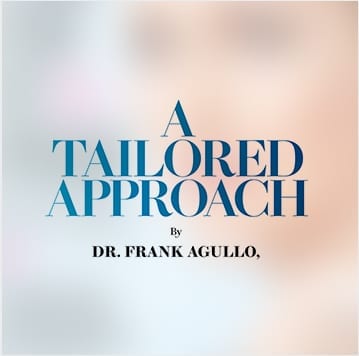
What Are the Benefits of Breast Reconstruction?
- Provides natural-looking breasts
- Helps you feel more confident following your breast cancer journey
- Restores your sense of femininity
Am I a Candidate For a Breast Reconstruction?
Breast reconstruction is a personal and intimate decision that requires a clear understanding of the medical condition of your breasts and the solutions and limitations of the reconstruction process. Candidates for breast reconstruction should be in good health with no underlying conditions that may compromise your safety during the procedure or after its completion.Patients are recommended to avoid taking medication prior to the procedure to avoid any complications with blood thinning, blood clotting, or anesthesia. Realistic goals and expectations are always necessary for candidacy. Breast reconstruction may be right for you if you are experiencing consistent feelings of self-consciousness, have had a mastectomy or lumpectomy, or feel like you have had a feeling of loss due to the unnatural or less feminine feeling of your breasts.
What Is Discussed During My Breast Reconstruction Consultation?
During your breast reconstruction consultation, Dr. Agullo will provide a clear and open dialogue concerning your past health, examine the current state of your breasts, and discuss what is possible with breast reconstruction techniques. By examining your history with either lumpectomy or mastectomy, Dr. Agullo can provide a strategized and personalized approach to the application of tissue expander or tissue flap techniques. Dr. Agullo will give you a clear estimate of cost and the recovery plan required for your reconstruction.

What Does My Breast Reconstruction Include?
Breast reconstruction surgery is performed on an outpatient basis using general anesthesia, and it typically requires more than one operation. Some patients have the option of immediate reconstruction, where the initial stage of reconstruction begins at the same time as the mastectomy. Patients can also choose to have delayed reconstruction, where reconstruction is pushed until they heal from their mastectomy and finish radiation or chemotherapy treatments. The breast(s) can be reconstructed using a tissue expander and implants or using a tissue flap, which may or may not also involve implants.
Your oncologist (cancer surgeon) and Dr. Agullo can help you determine whether immediate or delayed reconstruction would be best for you as well as the best reconstruction technique for your needs.
Tissue Expander and Implant Technique
- The most common breast reconstruction technique involves using a tissue expander and the placement of a silicone implant.
- A tissue expander is placed underneath the skin and chest muscle and gradually filled by your plastic surgeon with a saline (saltwater) solution over the course of a few weeks. This stretches the skin and tissues to make room and create coverage for an implant.
- A subsequent procedure removes the expander and replaces it with a silicone breast implant.
- This technique is preferred by some because it is a shorter surgery with fewer risks than flap techniques.
Tissue Flap Technique (With or Without Implants)
- Reconstruction with an autologous tissue flap involves using tissue from the patient’s abdomen or back to create the new breasts or cover an implant.
- The TRAM (transverse rectus abdominis myocutaneous) flap uses skin, fat, and muscle from the abdomen. The tissues may be removed and reattached to the blood vessels of the chest, or they may be tunneled under the skin and left attached to their original blood supply. This technique has the added benefit of slimming the abdomen with results similar to a tummy tuck.
- The latissimus dorsi flap uses skin and muscle from the patient’s back tunneled under the adjacent skin to the chest—while remaining attached to its own blood supply.
- If there is a sufficient amount of tissue in the flap, an implant may not be needed. However, an implant is often used in conjunction with a flap technique.
At Agullo Plastic Surgery, tailored care begins with a full consultation to discuss the goals and options available.

How Should I Prepare for My Breast Reconstruction?
Breast reconstruction surgery is a personal decision, and each patient should undergo this procedure based on their own desires rather than any outside influences. Patients must also be in good health and have realistic expectations regarding their results. Dr. Agullo will evaluate your natural body frame and existing breast tissue to recommend the best technique for your procedure.
Before you undergo your breast reconstruction procedure, DO NOT:
- Eat or drink after midnight on the night before your surgery
- Forget to pack an overnight bag in case you need to spend the night
- Use any lotions or creams on your skin, particularly in the chest area
- Smoke tobacco or use nicotine products for at least two weeks
What Are Your Concerns About Breast Reconstruction?
What Can I Expect During My Breast Reconstruction Recovery?
Following your breast reconstruction, you will be asked to wear a surgical garment to support your new breasts and minimize swelling. Swelling and bruising will occur but should resolve after a few days. A drainage tube may also be placed in the treated area to collect excess fluid and blood. You may experience moderate pain, but you will be prescribed oral pain medication to manage any discomfort following your breast reconstruction surgery.
Are There Risks Associated With Breast Reconstruction?
As with most procedures, there are some risks associated with breast reconstruction, which may include:
- Extreme fatigue
- Scar tissue growth
- Infection
- Implants leaking or rupturing
- Loss of sensation
- Problems such as swelling, fluid build-up, or pain at the donor site
- Blood clots or capsular contracture
- Need for additional surgery if problems occur
- Flap failure
- Weakness of the abdominal wall
Will My Breast Reconstruction Leave Scars?
Scarring will depend on the technique used during your breast reconstruction procedure. Any visible scars that do occur can be hidden underneath clothing and will likely fade over time.
When Will I See My Breast Reconstruction Results?
Breast reconstruction surgery can restore your breasts’ femininity to make you feel beautiful inside and out. This procedure can also help you feel more confident following your breast cancer journey and improve your self-esteem.
You may return to light activities around the house two days after your surgery. You will be able to return to work four weeks after your procedure, but make sure to avoid all strenuous activities for at least eight weeks.
Breast Reconstruction FAQs
Breast reconstruction is specifically designed for patients who have experienced mild to severe complications with the appearance of their breasts after a mastectomy and is not designed for simple augmentation purposes or women who have not experienced any loss of the breast. Patients who have experienced lumpectomy can also receive a breast reconstruction, which removes abnormal tissue (tissue that is not always cancerous).
To determine when your body is ready to undergo breast reconstruction therapy after radiation, it is important to discuss with your breast cancer specialist. Patients may not be eligible for breast reconstruction during or immediately after radiation therapy as this may exacerbate the fragility of thin skin, decrease the vascularity of tissue, and lead to other side effects caused by radiation therapy.
Given the right candidate, breast reconstruction can be combined with a breast lift (if reconstruction is only performed on one breast) or even liposuction around the upper body and arms for a more flattering silhouette.




